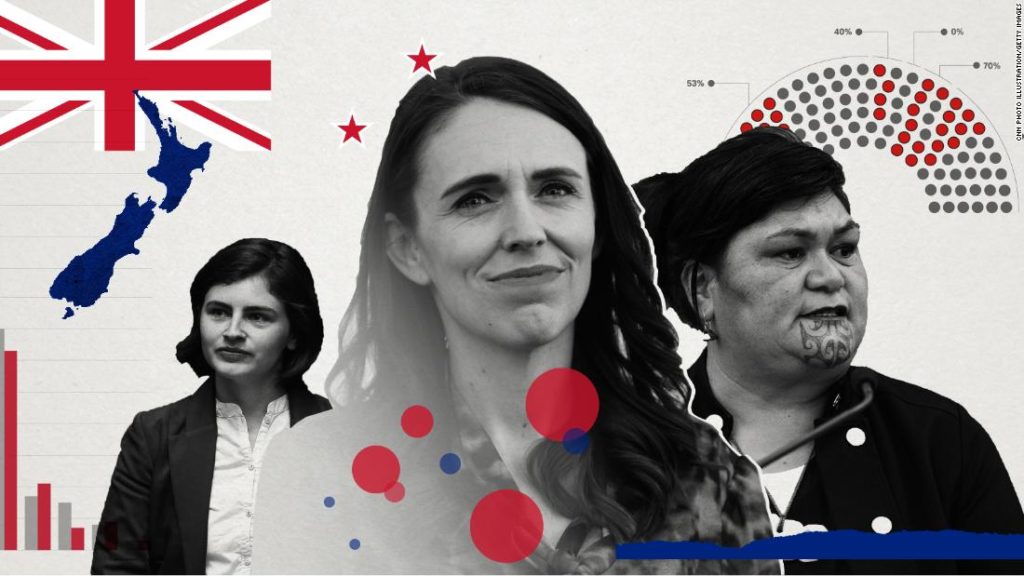But in New Zealand, that was just the start.
Almost half of New Zealand’s newly sworn-in Parliament are women and 11% are openly LGBTQ. Both New Zealand’s Indigenous Māori and people with Pacific Island heritage are represented at a slightly higher rate than in the general population.
Politicians from diverse backgrounds aren’t just making up numbers in Parliament — they’re in key positions of power.
“It looks like New Zealand looks,” said Jennifer Curtin, a professor of politics and director of the Public Policy Institute at the University of Auckland, of the country’s government. “We’re not male, pale and stale anymore.”
Here’s what New Zealand’s new Parliament looks like
The proportion of openly LGBTQ lawmakers has also increased from 7% to 11%.
Curtin said that having a representative legislature meant there was a range of perspectives at the decision table. “Diversity in itself is good,” she said. “Anything that disrupts the homogeneity and the dominance of the White majority, or the colonizers, of this place.”
Here’s how that stacks up globally
Out of thousands of active lawmakers across the globe, just 194 are openly gay in 42 countries, according to data collated by Andrew Reynolds, from the School of Public and International Affairs at Princeton University.
Of those countries, New Zealand now has the highest proportion of openly LGBTQ lawmakers, at 11%, according to his data. (Previously it was the United Kingdom, at 8%.)
New Zealand’s closest neighbor, Australia, only has 31% female representation in its lower house, while Pacific Island countries have an average of 6%.
As for ethnic diversity, the country is still lacking when it comes to representation of Asian New Zealanders, for example, who make up 15% of the country’s general population, but only hold 7% of seats in Parliament.
But demographer Paul Spoonley, a professor at Massey University in Auckland, said a parliament didn’t need to perfectly match the overall makeup of the general population to be representative — although warned if it was too different the public might lose trust in their lawmakers.
“I think it’s really important that a political system represents the diversity including the ethnic diversity of a population, and that’s because they bring that voice and experience,” he said.
But there’s still room for improvement
The significance of all this is that New Zealand’s Parliament looks more like the general population — which in turn makes it more representative.
But that doesn’t mean it’s perfect.
And Spoonley, the demographer, pointed out that diversity includes making sure a range of ages and socioeconomic backgrounds are represented.
“It’s not a finished project,” Curtin said.
Not everyone in New Zealand is happy about Ardern’s diverse Parliament. Right-wing blogger Olivia Pierson said Mahuta’s moko kauae wasn’t fitting for a foreign diplomat and that her appointment showed Ardern had “gone full wokelette on stilts.”
While New Zealand may have a diverse Parliament now, there’s no guarantee for the future.
The country’s right-leaning parties have less diverse representation than its left-leaning parties, so a switch in government in 2023 could mean a less inclusive Parliament. New Zealand’s main opposition party, National, has only two Māori MPs and only 30% of its lawmakers are women. No current National MPs are openly LGBTQ.
Curtin says she hopes that there’s a “contagion effect” where parties on the right decide to become more diverse so they can attract voters.
“We have seen ebbs and flows on the representation of women before,” she said. “It’s not a given that this degree of diversity will hold beyond the next three years.”
You may also like
-
UK coronavirus variant has been reported in 86 countries, WHO says
-
NASA technology can help save whale sharks says Australian marine biologist and ECOCEAN founder, Brad Norman
-
California Twentynine Palms: Explosives are missing from the nation’s largest Marine Corps base and an investigation is underway
-
Trump unhappy with his impeachment attorney’s performance, sources say
-
Lunar New Year 2021: Ushering in the Year of the Ox

